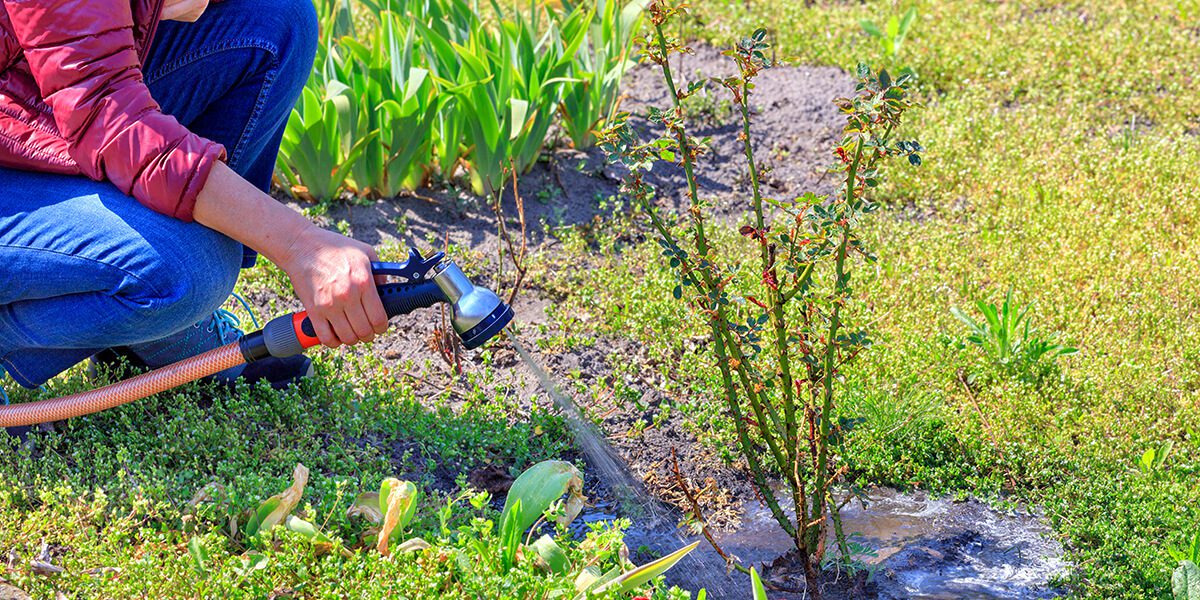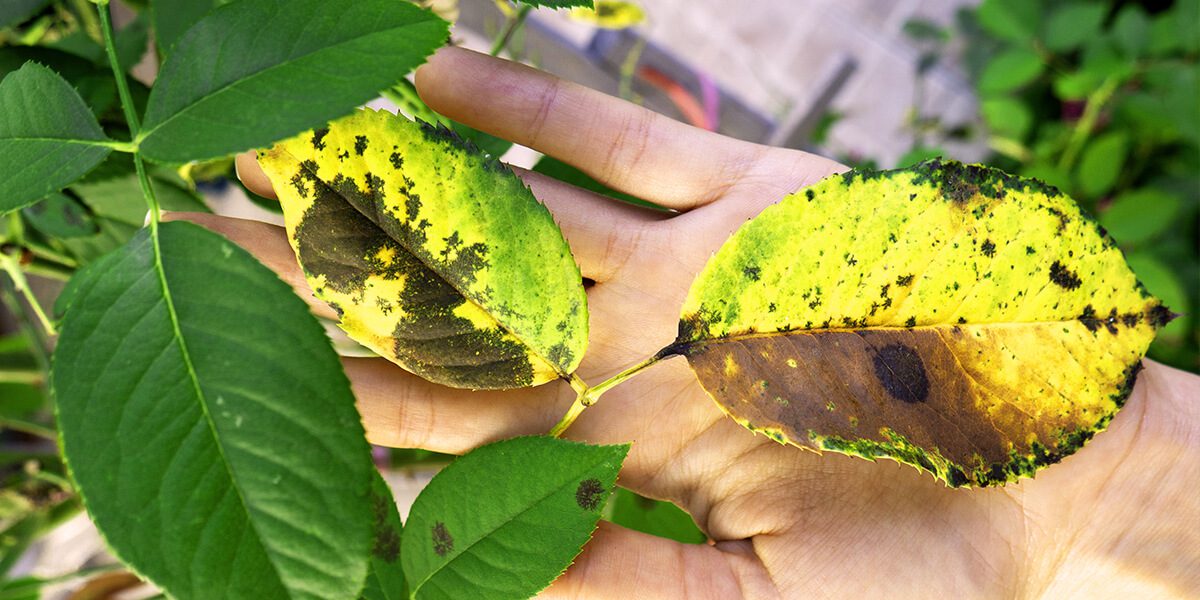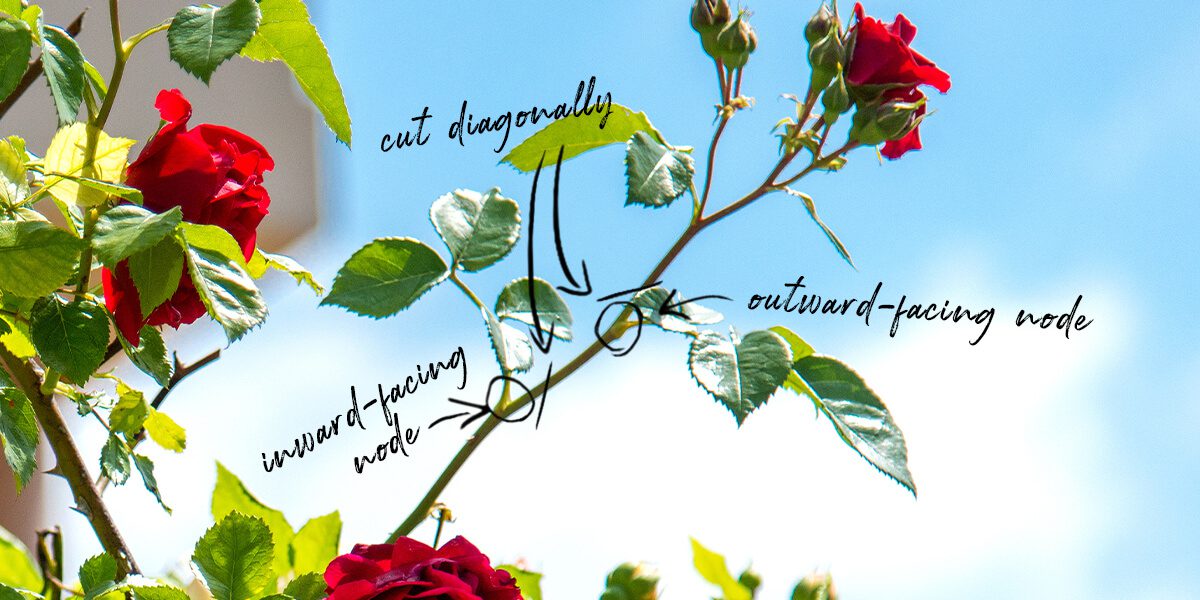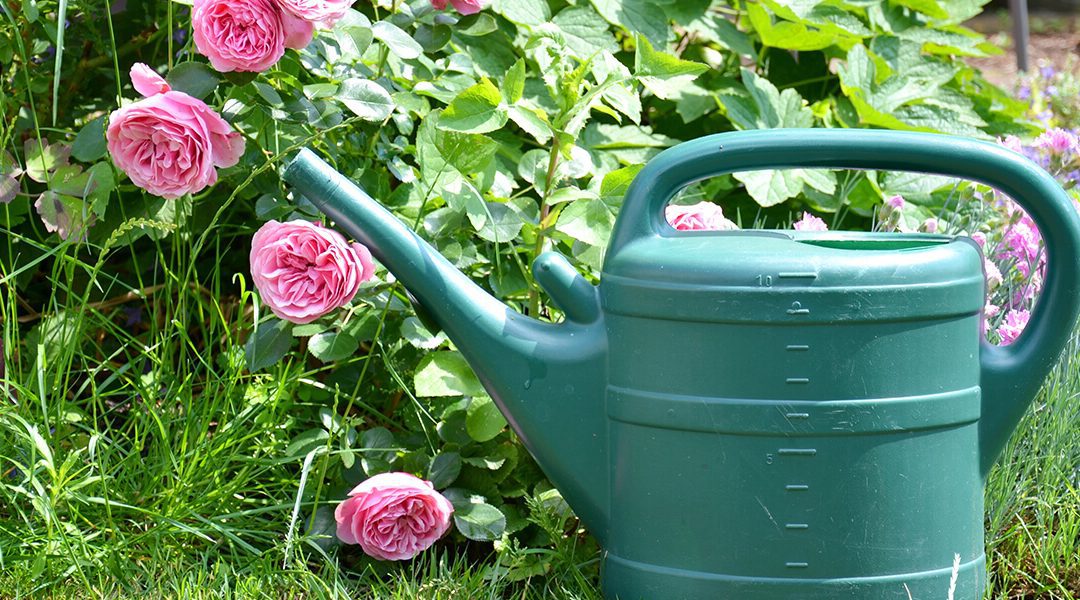Roses have a reputation for being challenging. The reality is that many modern varieties are resilient and hardy, thanks to the patient effort of plant breeders over the years. Still, it’s natural to give some extra love to the most beautiful flowers in the garden. Here’s how to take care of watering, soil, pruning and pest prevention!

How to Water Roses
Like many garden plants, roses enjoy a weekly drink of water, approximately 1-3 inches per week. It’s always best to hit the soil directly without splashing the leaves. You’ve probably heard that watering advice before. Still, it’s essential for roses, as wet leaves are vulnerable to rust, black spot, mildew and other common rose pests, as you’ll see below.
Soil and Fertilizing
For any plant with such impressive blooms, you want to take care you’re giving it the proper nourishment—but how? Replenish the soil with fresh compost or organic fertilizer in the spring, and dress on more during the summer, after their initial bloom period. Taper off any fertilizing by mid-August, so the roses have time to slow down before winter.

How To Prevent Common Diseases
If you’re growing roses, at some point, you’ll likely deal with rust, black spot, or powdery mildew on the leaves. These common diseases can range from being an ugly inconvenience to a destructive force. Here’s how to take care of them!
1. Prevention: since moisture leads to fungus, it pays to prune away overly dense spots and open up the leaves to good airflow.
2. Pruning: if you see any infected leaves or canes, prune them away and dispose of them outside your compost. Any infected leaves left on the ground can spread spores back to the plant as well, so remember to pick those up. Finally, sanitize your pruners in between cuts so you don’t spread the spores to healthy branches.
Deadheading Roses
Clipping away spent flowers encourages your rose to keep blooming. Once the petals are gone, you can cut out the leftover flower to the nearest leaflet. Remember to stop deadheading in the fall so the roses can prepare for winter. Letting them grow rose hips brings winter color to your garden and provides food for overwintering animals.

How to Prune Roses
Late winter or early spring are ideal times to prune your roses. Throughout the rest of the year, limit pruning to the DDD rule: diseased, damaged, and dead branches. Here’s how to take care of pruning most efficiently:
1. Notice the Nodes: the placement of your cuts determines the shape of the regrowth beneath the cut. Cut above an outward-facing node if you want the branch to regrow out away from the center of the shrub. For growth in the opposite direction, cut above an inward-facing node. To promote airflow, you generally want branches to grow outward.
2. Do Diagonal Cuts: this is a small tip but important to remember. Diagonal cuts are more pleasing to the eye. Plus, they help the rain runoff, protecting the exposed wood from infections.
Know Your Rose
These maintenance tips apply to most kinds of roses. But the world of roses is vast, and each breed has its own personality. To give your roses the best care, take a moment to find out which ones you’re growing and how they grow best. A climbing rose certainly has different pruning needs than a miniature rose. Some roses may need protection over winter, while others are hardy to anything the Midwest can throw at it. The type of rose you have will influence how you take care of it!
For any more advice on how to take care of roses, feel free to drop by our garden centers in Chicagoland!
Platt Hill Nursery is Chicago’s premier garden center and nursery.


